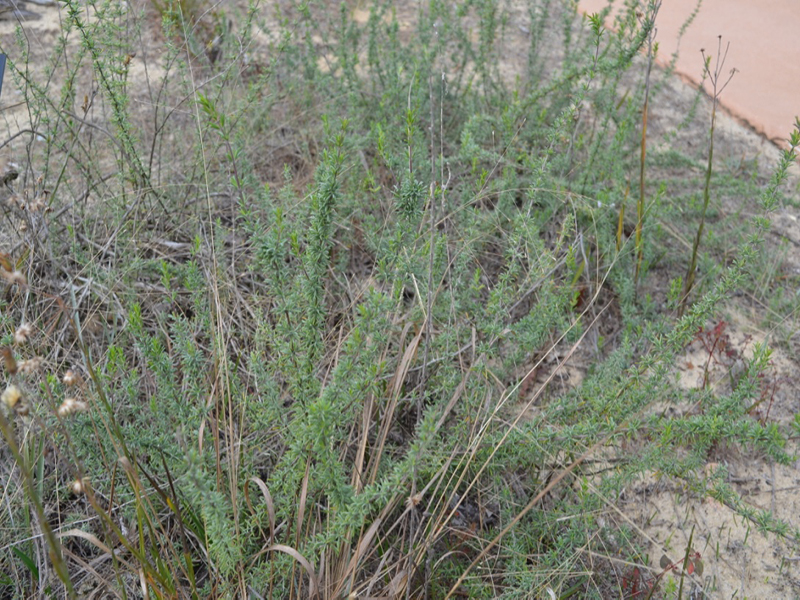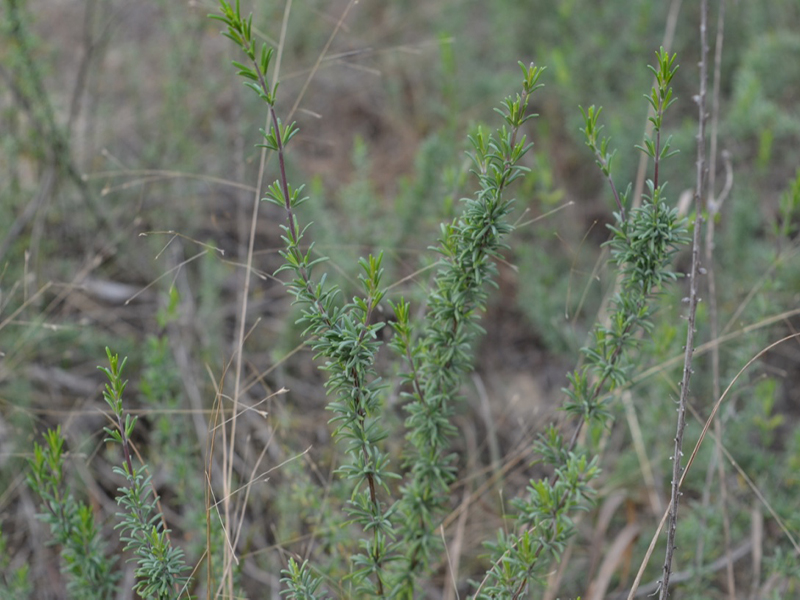Conradina brevifolia (Short-leaved Rosemary)
Botanical Information
| Family | Lamiaceae |
| Genus | Conradina |
| Species | brevifolia |
| Category | Perennials, Woody |
| Type | Shrub (evergreen) |
| References | NatureServe. 2019. NatureServe Explorer: An online encyclopedia of life [web application]. Version 7.1. NatureServe, Arlington, Virginia. Available http://explorer.natureserve.org. (Accessed: May 13, 2019 ). |
| Origin | Native to Florida. |
Details
| USDA Hardiness Zone | 8a - 9b |
| USDA Hardiness Ref. | |
| Canadian Hardiness Zone | Requires cold season protection under glass. |
| Canada Hardiness Ref. | |
| RHS Hardiness Zone | H5 - H3 |
| RHS Hardiness Ref. | |
| Temperature (°C) | (-12.2) - (-3.8 ) |
| Temperature (°F) | 10 - 25 |
| Height | 1 m |
Description and Growing Information
| General Description | A perennial, aromatic shrub, growing to 1 m in height, from a woody root. Stems are highly branched. Leaves are linear, 4-8 mm long, and fleshy. Lavender flowers arise from the leaf axils. |
| ID Characteristic | "The short-leaved rosemary is one of five shrubby mints in the interior central Florida scrub. The others are Calamintha ashei, Dicerandra frutescens, D. christmanii, and a Dicerandra population whose taxonomic status is unresolved. C. brevifolia was described as a new species by Shinners (1962)" (NatureServe. 2019). |
| Propagation | By seed. |
| Cultivation | Will not tolerate shade. |
| Notable Specimens | Bok Tower Gardens, Lake Wales, Florida, United States of America. |
| Habitat | Sand scrub with a scattered over story of sand pine (Pinus clausa), interspersed with evergreen scrub oaks (Quercus spp.). C. brevifolia is usually found interspersed in clearings with other small shrubs and herbs. |
| Leaf Description | The short-leaved rosemary is a perennial shrub with leaves on well-developed flowering branches that are 6.0-8.2 mm long, mostly shorter than the internodes. There are between one and six flowers per axil. |

